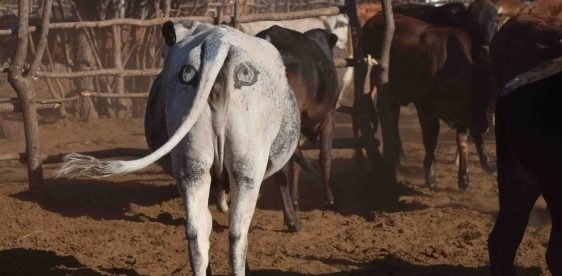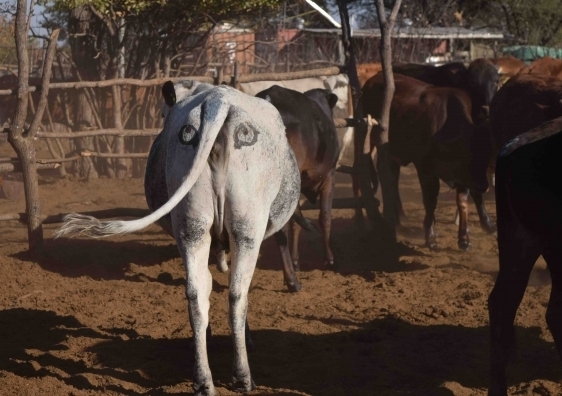Why It May Make Sense to Draw Eyes on Cows’ Butts

Like most animals, cows have fronts and rears. And like most animals, cows don’t have eyes on their butts. Which is what makes the photo below so unusual.

That picture, taken by a Research Assistant at the Botswana Predator Conservation Trust named Ben Yexley, is most definitely of the rear end of a cow. The spots on either side of its tail vaguely, at worse, resemble eyes. And that’s by design. The “eyes” aren’t naturally-occurring spots on the cow in question. They were painted onto its butt.
And it wasn’t a prank, either. In fact, it was done to protect the cow from predators.
A few years ago, another researcher at the Conservation Trust named Neil Jordan noticed something unusual. As the BBC reported, Jordan “watched a lion stalk an impala for 30 minutes but suddenly abandon his prey when the antelope turned and looked at the predator.” Jordan wondered: did the lion flee because its prey made eye contact? And if so, could conservationists use that knowledge to save the area’s cattle?
In 2016, Jordan and team ran an experiment. A rancher in the Botswanan town of Maun agreed to let them paint eyes on the backsides of about a third of his herd (of about 65 cows). The next time lions attacked — and this was apparently a rather common occurrence — the researchers tallied up the totals. Per the Sydney Morning Herald (SMH), “while three unpainted cows were killed by lions, all the painted cows survived to graze another day.” The experiment seemed to work. Maybe it was dumb luck, but maybe the eyes on the backs of the cows deterred the lions from attacking.
The research team is still running more trials; as Jordan told his university’s press department, the original experiment, which he called “iCow,” is “too small a sample size to say whether it was just due to chance.” (And even if the cow butt eyes convince lions to move on, it’s unclear what the predators will do if the entire herd is armed with iCows.) If it works, though, it could be a boon for rural African farmers, as paint is cheaper than replacing a cow — by a lot. According to the SMH, “losing one cow costs five times as much as painting a herd of 60 cattle.”
Bonus fact: The term “make it rain” has a few definitions (e.g. “to throw a substantial amount of paper money so that it falls on a crowd, audience, performer, or group of performers, often as a way to show off one’s wealth” per Wiktionary), and by and large, those definitions have something to do with money. And if you really want to “make it rain,” you may want to use Botswana’s currency, the pula. That’s because Botswana gets very little rainfall — so little, that the word for “rain” and “blessing” is the same in Setswana, the language spoken there. That word? “Pula.”
From the Archives: Cow Magnets: Why it makes sense fo feed magnets to cows.
